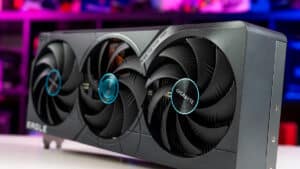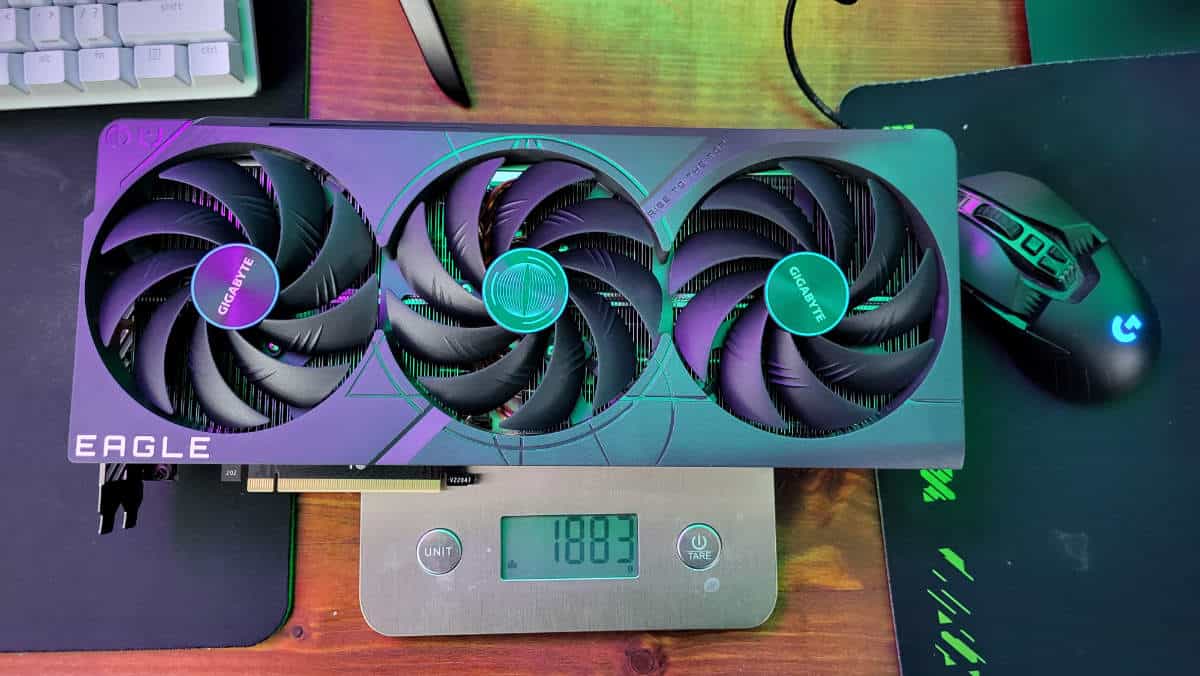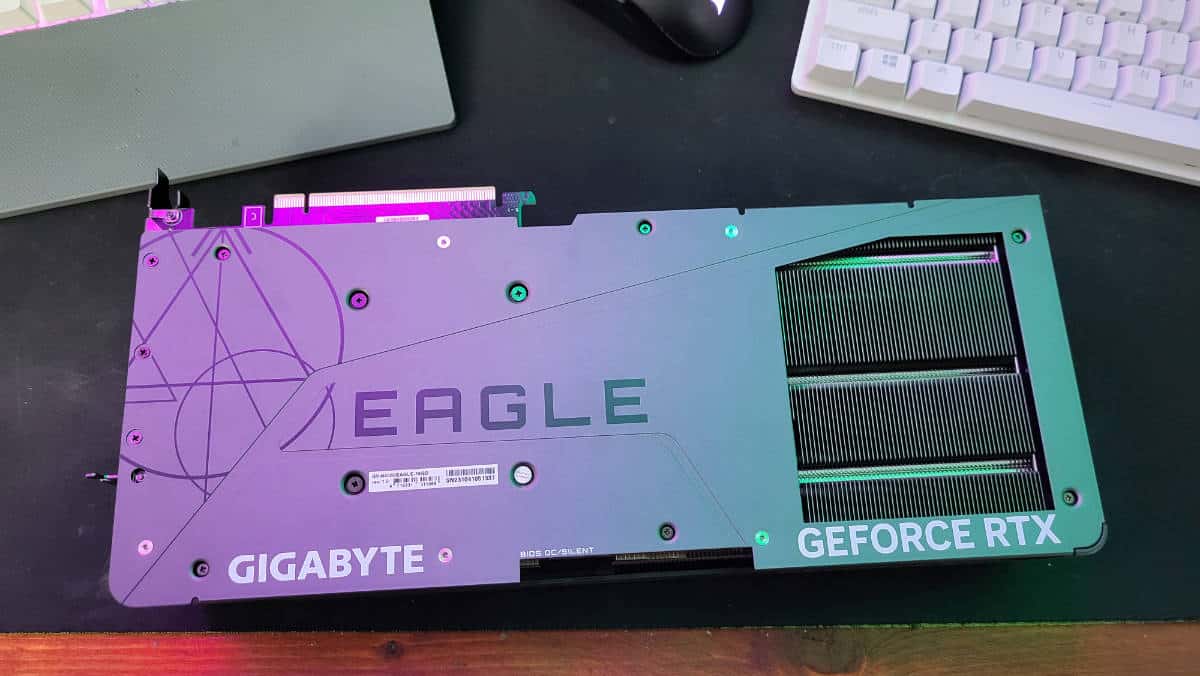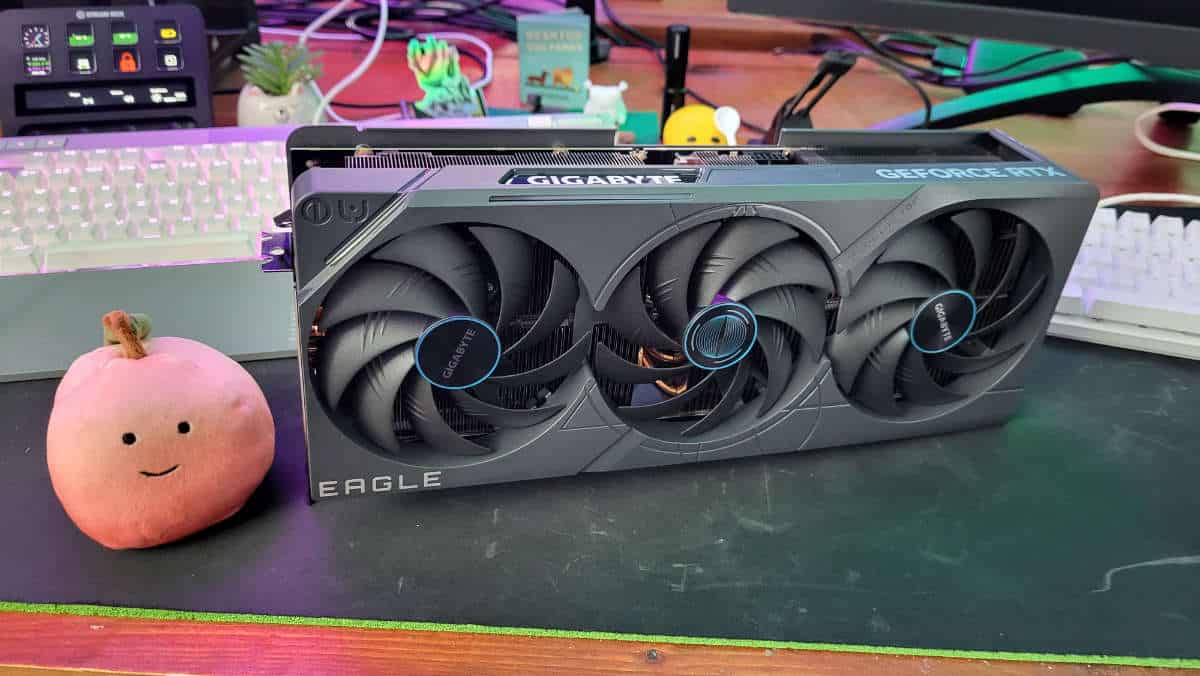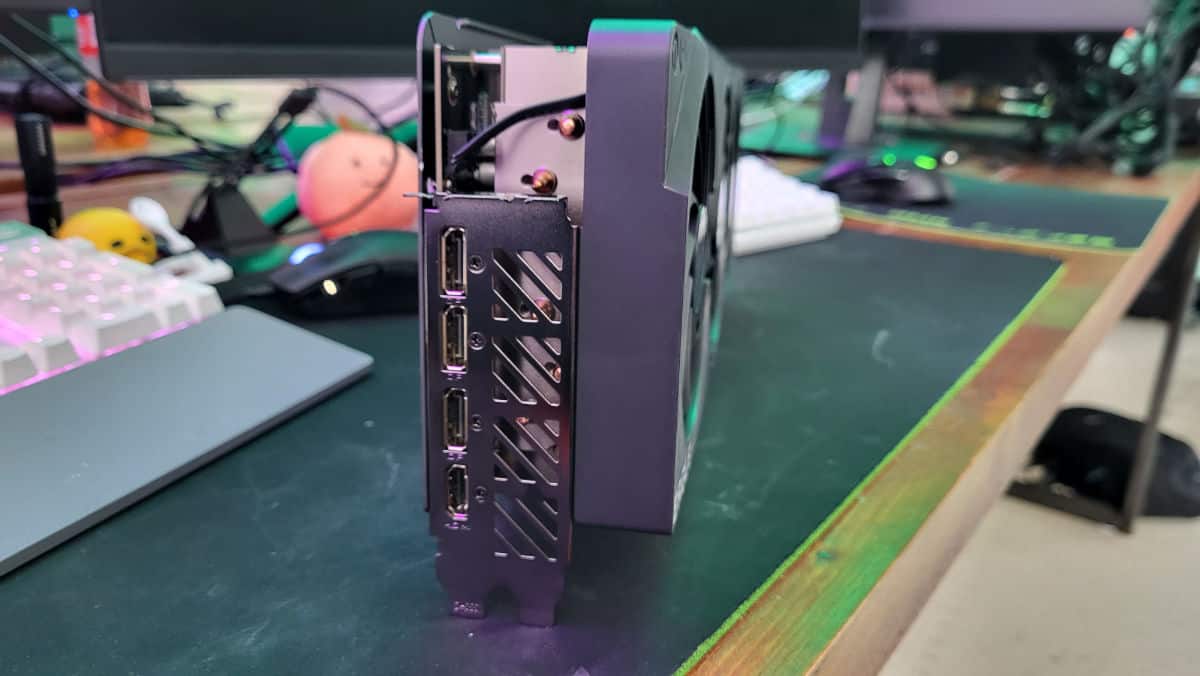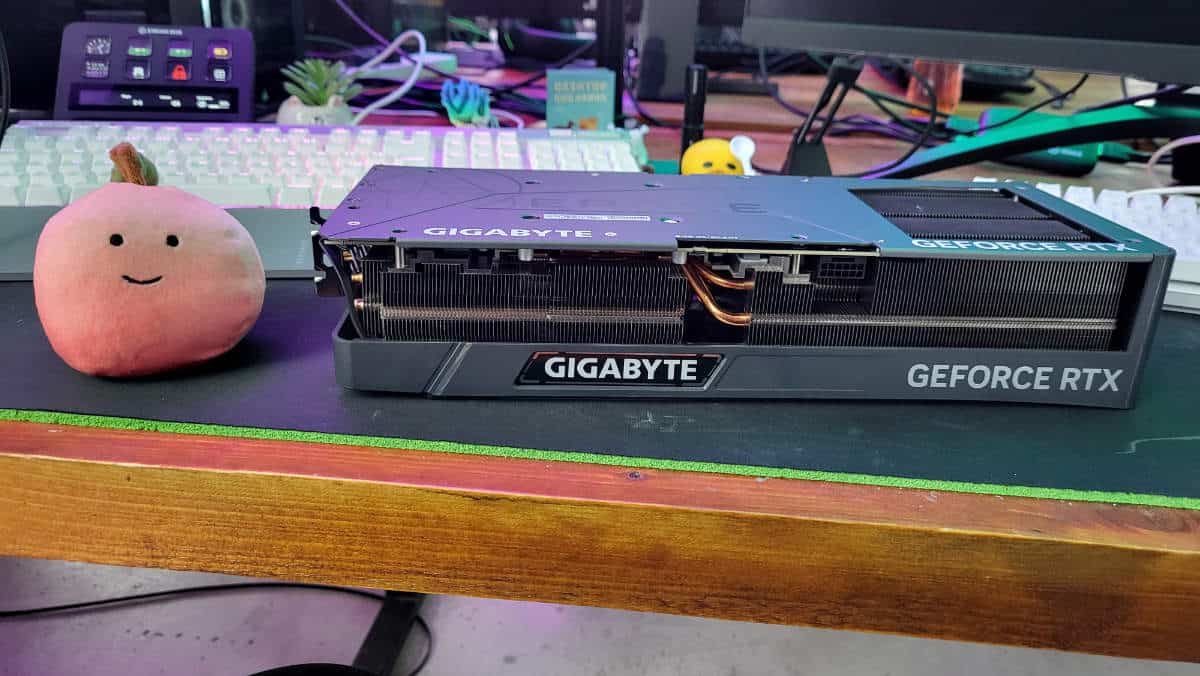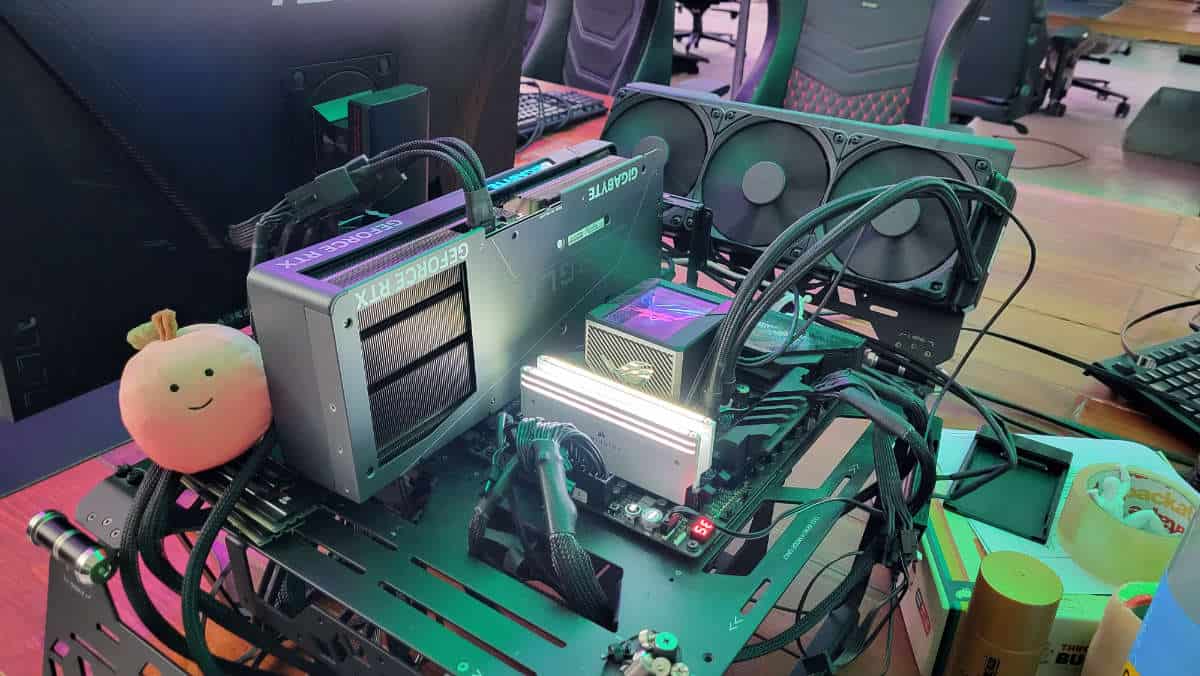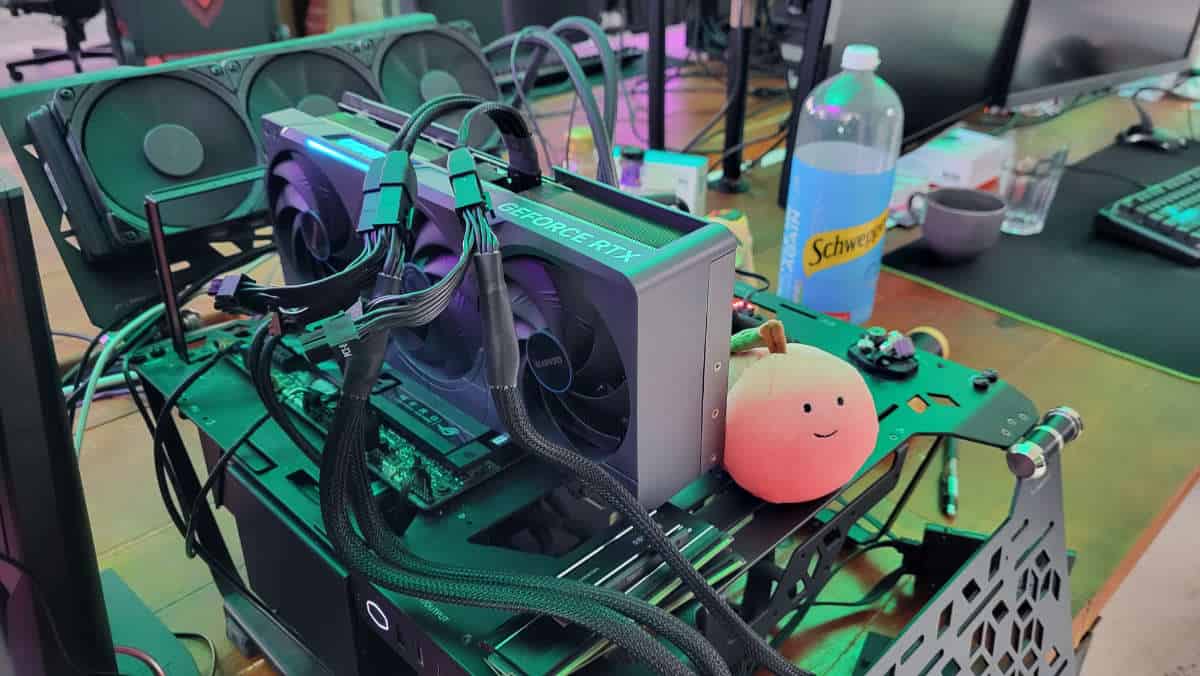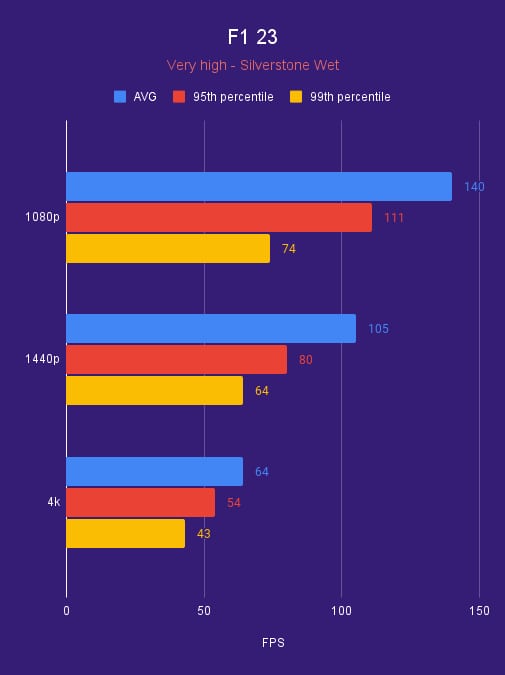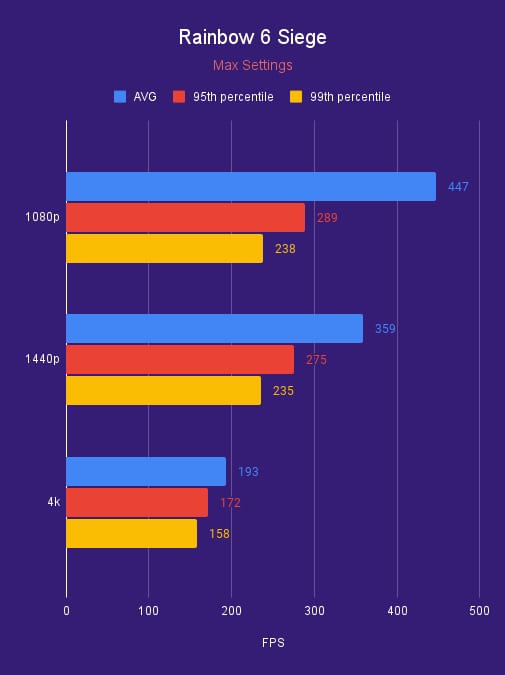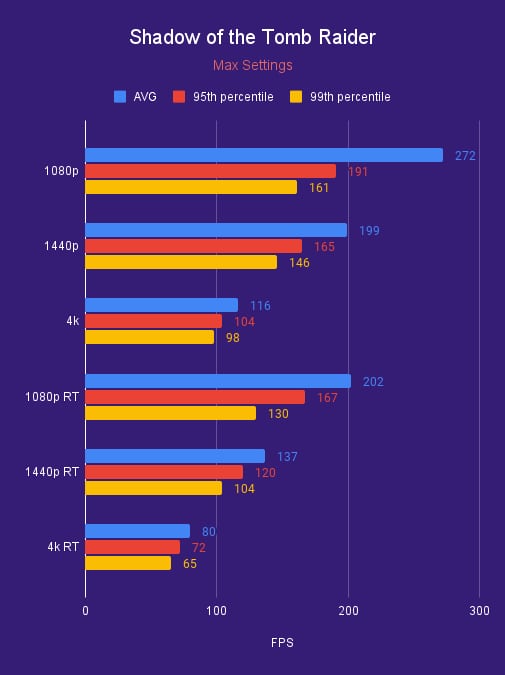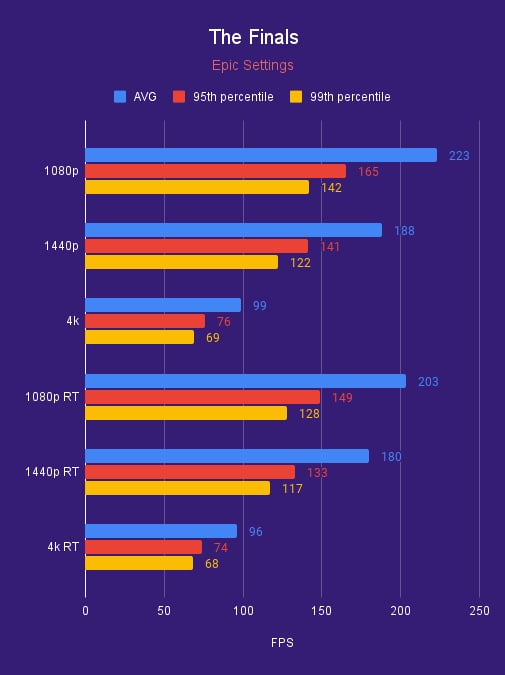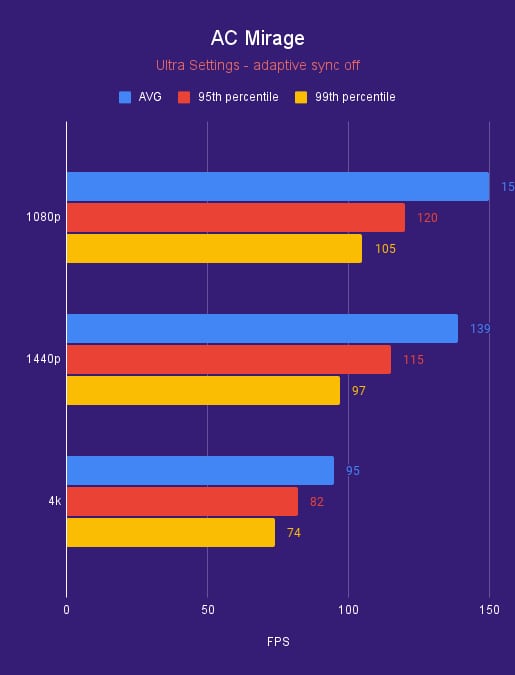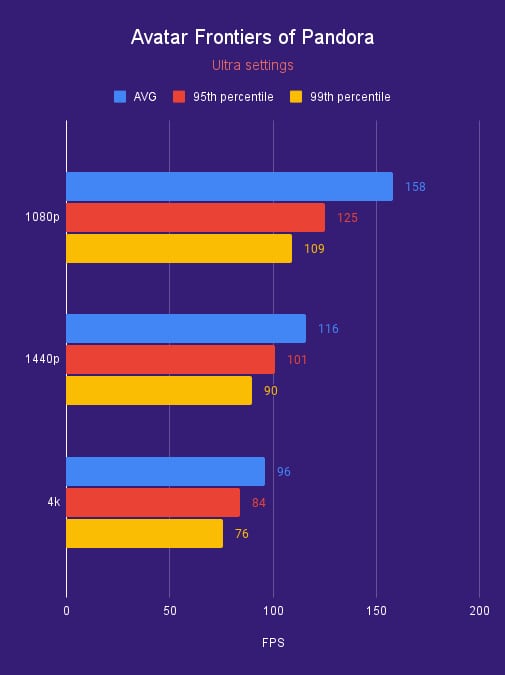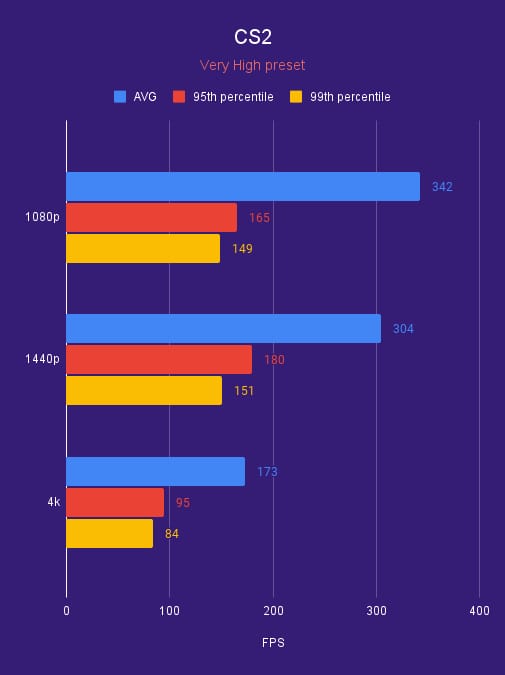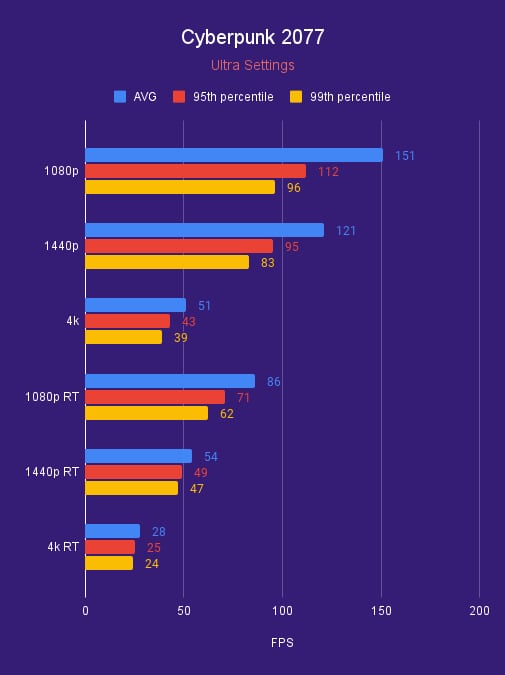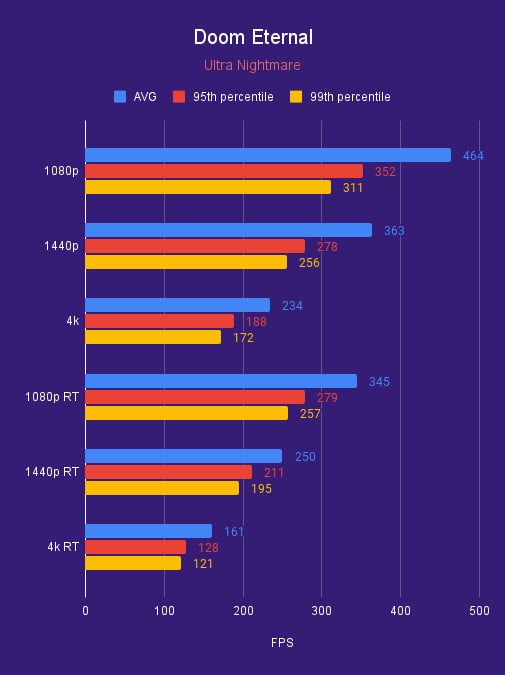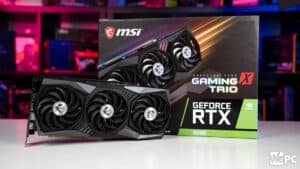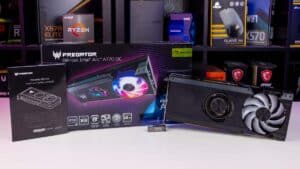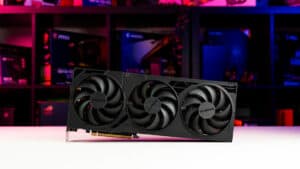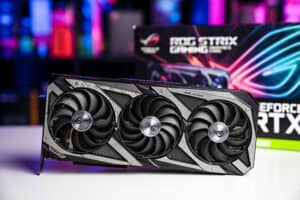Gigabyte Eagle RTX 4080 review – is the RTX 4080 worth it?
It might be surpassed now, but is the RTX 4080 worth it? We find out in our review
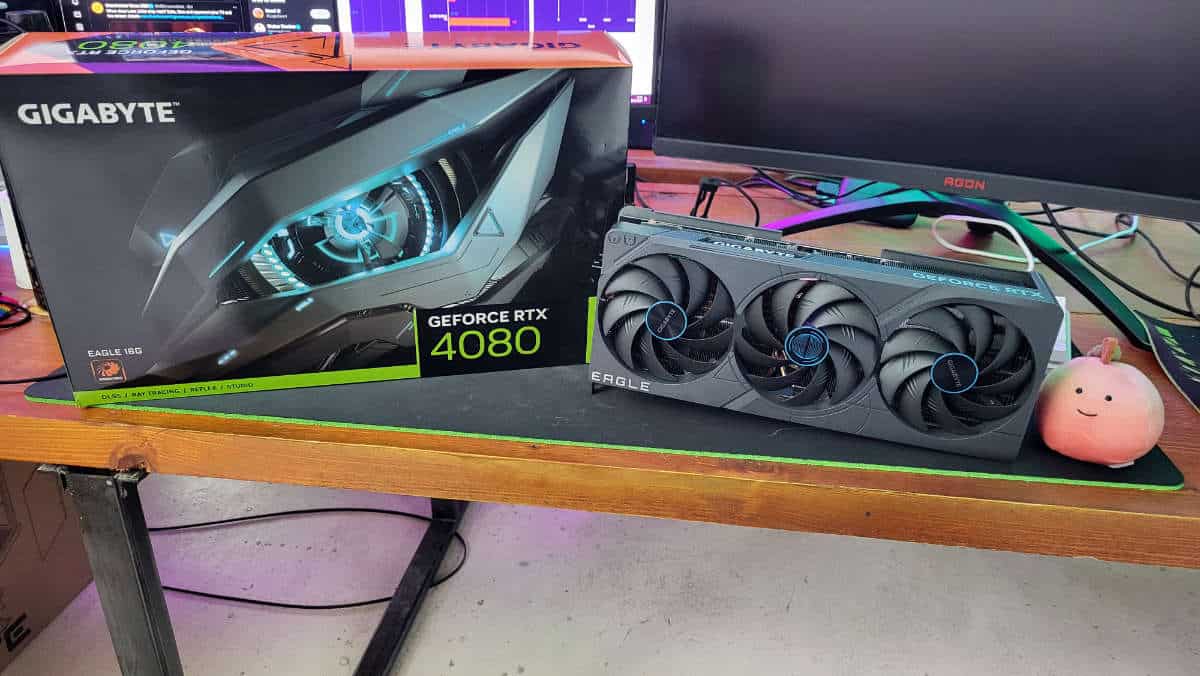
WePC is reader-supported. When you buy through links on our site, we may earn an affiliate commission. Prices subject to change. Learn more
As the RTX 40 Series has expanded its lineup there are some cards that we still haven’t got around to. One of which is what we’ll be taking a look at today. It’s not exactly the most popular choice, and now there are even suggestions of it being ended by being dethroned by the RTX 4080 Super release. Even still we take a look back at what the initial card has to offer with our Gigabyte Eagle RTX 4080 review.
Initially, there may have been a lot to expect from the new 80 model, after the great success of the RTX 3080 before it. However, it didn’t turn out that way, be it the downturn of the market or the general offering the 40 series brought, especially the price but more on that later.
The RTX 4080 launched in November of 2022, not long after the announcement of the new Ada generation. Bringing with it a lot of improvements across the board and introducing plenty of new features. Of course, that was true across the board, so what makes the 4080 what it is instead? Plus what does Gigabyte have to offer with its cooling solution, let’s find out what makes it a top GPU.

GIGABYTE GeForce RTX 4080 Eagle OC
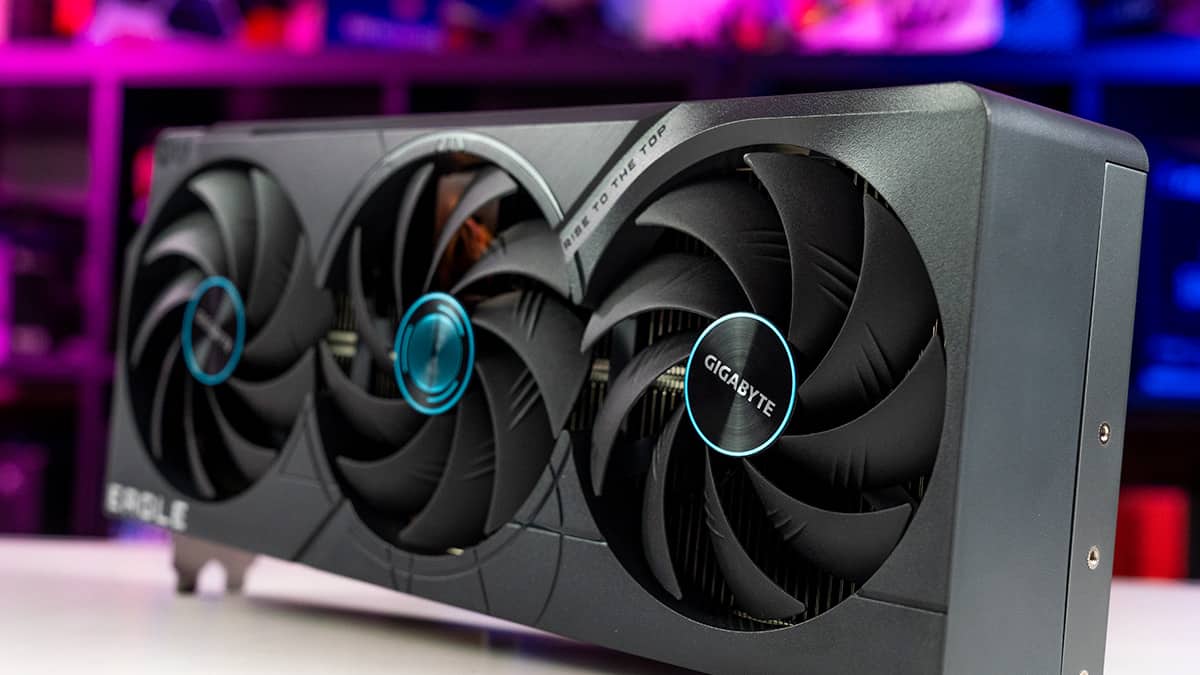
Core clock speed
2205 MHz base, 2520 MHz boost
CUDA count
9,728
Memory
16GB GDDR6X
Dimensions
342 x 150 x 70 mm
PSU required
850W
TBP
320W
Pricing
This is where we find that the RTX 4080 started off with quite the shock and upset. Where the 3080 started off strong with great value, the next gen didn’t quite achieve the same level. The last gen’s option came in with an MSRP of $699, and even when the shortage may have changed that quite a bit, in principle the value was fantastic.
But the next gen didn’t get the memo that the demand had slowed down considerably. The RTX 4080 launched with an MSRP of $1,199. A staggering $500 jump that just seemed out of nowhere and made it out of reach a majority of gamers. It also made it the less appealing choice for most of the generation.
Compared to the RTX 4090, it comes in $400 less as that had an MSRP of $1,599 whilst then had a $400 higher pricing than the RTX 4070 Ti that was next in line, which would make that card more like the old 3080. Even AMD didn’t go for such a high price, as the RX 7900 XTX launched at $999.
Now though you’re unlikely to find the card at that price. Looking around, it’s going to cost you more as what might be a scarcity of sorts. The RTX 4090 is limited or sky-high in price as it sits between the enterprise and enthusiast level with its memory setup. Now that means the 4080 was the more available choice and boomed in price, but that might not last much longer, since the RTX 4080 Super comes as a replacement for the 4080 and even lowers the MSRP down to $999.
Design
Core clock speed
2205 MHz base, 2520 MHz boost
CUDA count
9,728
Memory
16GB GDDR6X
Dimensions
342 x 150 x 70 mm
PSU required
850W
TBP
320W
Memory clock
22.4 Gbps
Memory bus
256-bit
Card bus
PCIe 4.0 x16
Output
1x HDMI 2.1a, 3x DP 1.4a
Power connectors
1x 16-pin 12VHPWR
- Top performance across the board
- Plenty of features and additions available to utilize
- Simple and sleek design
- Excellent cooling
- Way too expensive
- Large and bulky
The Gigabyte Eagle RTX 4080 keeps things a bit simpler with its design. Moving away from the 30 series jagged design, it’s simplified things further keeping things down to a standard box. Although it does bring more cuts and design to the faces to keep things fresh and looking nice.
Looking at the front, or fan side, you get three 110mm fans part of the Windforce cooling system. With alternate spinning fans that have a channel and design to force that air into the cheat sink of the card. Which itself has a vapor chamber directly attached to the GPU to dissipate heat to the 10 composite copper heat pipes throughout that do well to keep the 320W TGP under wraps.
This certainly keeps things cool and is helped by the back plate with its screen cooling as the cutout allows air to leave the graphics card and lower temps. Provided also by the metal back plate that radiates any that gets passed onto it too.
Whilst on the side you’ll find mostly heatsink as Gigabyte makes sure not to cover any potential cooling options. Instead, just the lower part brings the branding and some light without an oversaturation of RGB. In terms of the IO, you can find just one HDMI 2.1 port, and three DisplayPort 1.3a which is the standard selection these days. It also comes with two BIOS modes, letting you choose between performance and turning down the noise if you need to.
Gigabyte Eagle RTX 4080 performance
The RTX 4080 reaches new heights. Of course, it’s not like RTX 4090 performance, but it’s still staggering. With the likes of synthetics and gaming not being a struggle for the card. 4K is a breeze, although there are some challenges here and there if you want to reach that 60 FPS at the highest settings it comes very close.
Our test setup consisted of the following:
- Ryzen 9 7950X CPU
- ROG X670E Hero motherboard
- Phanteks 1000W PSU
- Corsair Dominator Titanium 64GB 6600
- ROG Ryujin II 360 AIO CPU cooler
RTX 4080 gaming performance
In our gaming tests, we’ve seen the 4080 not have any issues. CS2 is a breeze for it as it achieves well over 340 FPS at 1080p, and 304 at 1440p, but then drops down to 173 average at 4k. Making the most out of the Source 2 engine, you can appreciate the full extent of the game whilst getting the high refresh rate advantage.
Cyberpunk 2077 is obviously the big punisher here. Nvidia has put a lot of improvements and tech into it, being the first to feature frame generation and path tracing with DLSS 3.5 and such. That means it has some tough graphics and hard-hitting performance on the ultra settings. Where for our setup it averaged 151 at 1080p, 121 at 1440p, and just 51 at 4k. That does require you to adjust a bit to get yourself that smoother adjustment or utilize some upscaling.
Doom Eternal is no struggle as it runs 464 FPS at 1080p, 363 at 2k, and 234 at 4k. Then Assassin’s Creed Mirage is less easy with the graphics and optimization. There you can expect 150 FPS at HD, 139 at 1440p, and 4k will run around 95 FPS.
Another Ubisoft game we benchmarked is Avatar Frontiers of Pandora, which has a similar run to the previous game. With a 158, 116, and 96 FPS average. Rainbow 6 Siege with its Esports performance poses no trouble. With a 447 FPS 1080p average, 359 at 1440p, and 193 at 4k.
The Finals is up next, as it also benefits from high frame rates at its highest settings. With 1080p achieving 223 FPS, 1440p averaging 188, and 4K just shy of 100 with 99. Last of the basic options Shadow of the Tomb Raider also has no problems as it runs 272 average at 1080p, 199 at 1440p, and 116 at 4k. But what if you want better lighting?
RTX 4080 ray tracing performance
Cyberpunk 2077 is of course the first on the run with its punishing ultra settings and ray tracing. There the average falls by nearly half to an 86 FPS average at 1080p, 54 at 1440p, and just 28 at 4k. That does mean you should probably dial it down a bit or utilize some DLSS to get the most out of it.
Doom Eternal is less punishing than usual as the ray tracing still runs 345 FPS at 1080p, 250 at 1440p, and 161 at 4k. Then The Finals has a light implementation that still averages 203, 180, and 96 FPS respectively.
SOTTR cuts its frames to 202 FPS at 1080p, 137 at 1440p, and 80 at 4k by using ray tracing. F1 23 implements the technology in its presets so utilizing that you can expect 140 FPS at 1080p, 105 at 1440p, and 64 at 4k.
For more work related benchmarks, you can find more at PCGuide.
So, is the AMD Radeon RTX 4080 worth it?
Overall, at the cost that the RTX 4080 comes to, it’s hard to recommend to the casual gamer. Maybe if you have the money to spare, but the MSRP has long gone and the market tells a different story. With such a high price it really seems like a bit of a waste of money.
Especially now, with the news of the RTX 4080 Super succeeding it with a lower price tag and expected higher performance, that is a stronger contender. If that price stays the same once it comes to market is a different story, but the 4080 itself is not the best choice for your build.
As for the Gigabyte Eagle model, well it almost seems flawless. With a well-thought-out design that ensures the best cooling for your card, it does keep it under wraps. Cutouts in the right places and no unnecessary additions make it a robust model.

GIGABYTE GeForce RTX 4080 Eagle OC
